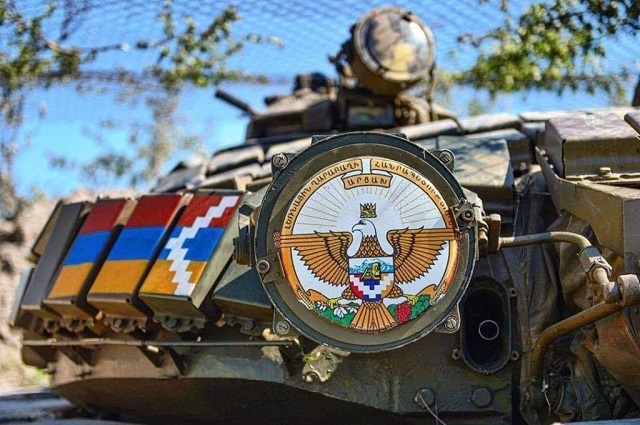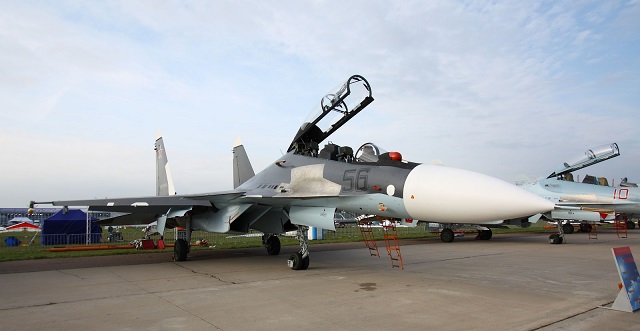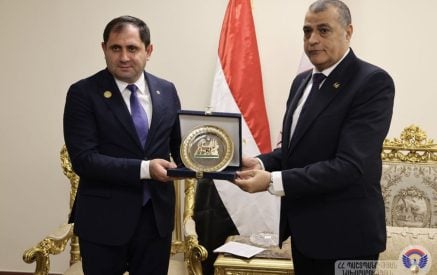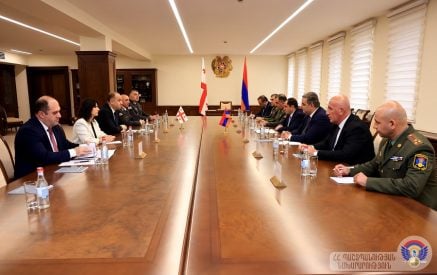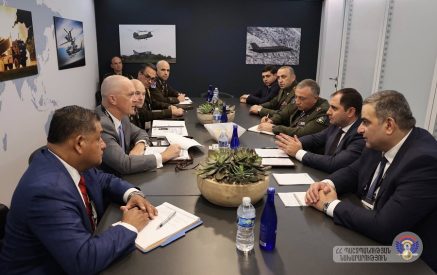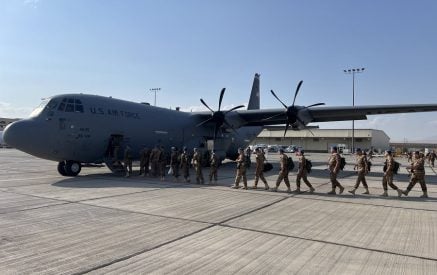The Armenian Weekly. The Artsakh War set an example for what next generation military weaponry is capable of. Warfare has changed its rules throughout the years; by integrating newer weaponry, the era of fourth generation warfare is finally coming to an end. What should we expect if newer wars ever erupt? What were some consensus changers? Did the Armed Forces of the Republics of Armenia and Artsakh react accordingly to the newly-developed threats, such as drones divide-and-control technology, etc., that the Azerbaijani armed forces aided by the Turkish air force utilized during the war?
“Have tanks and heavy armored vehicles become obsolete?”
We’ve all seen the footage that circulated throughout telegram channels of Bayraktar TB2s wiping out numerous Armenian T-72s. This is primarily due to the fact that most battles occurred on flat land. Armenian air defenses located in Artsakh were rather obsolete (to be discussed extensively in further sections).
Armenia’s Armed Forces along with the NKR defense force have approximately 450 to 500 main battle tanks (MBT) at their disposal which are mostly variants of the Soviet-made T-72. These variants include the famous T-72 “Ural” tank, the first ever mass-produced variant of the T-72 series that is widely used by post-Soviet countries. Due to its lack of explosive reactive armor (ERA), it is highly vulnerable to SABOT/HEAT rounds. Other variants include the T-72B which has added “Kontakt” ERA plating, making it a reasonable contender for the Azerbaijani Armed Forces’ T-72 “Aslan.” It also gives the tank crew a better standing against anti-tank guided missile (ATGM) attacks.
Read also
As footage and testimonies show, not much fighting occurred between tanks due to the abundance of ATGM sites located throughout the borders of NKR, as well as the excessive use of unmanned aerial vehicles (UAV). Some military magazines reported that tanks might become obsolete solely for those two reasons. This is not a new notion. In 2018 Turkey suffered extreme losses with respect to armor and armored personnel. This is largely due to the fact that the Syrian army has explicit Russian support as well as better equipment to deal with newer generations of tanks, such as the Leopard 2s of the Turkish Armed Forces.
Are tanks obsolete? Not by a long shot. The Syrian army operates the same variants of the T-72 and has been successful to discover its importance on urban battlegrounds. Military commanders know that tanks thrive in cover and are vulnerable against artillery fire and surgical/carpet bombing. This has been common knowledge even between Wehrmacht field marshals because the Panzer V “Panther” that preyed on allied armor due to its superior sloped frontal armor and its 75mm high velocity cannon had weak top armor plating and was easily wiped out by allied bombing runs. So, as long as the fighting occurs in urban grounds and/or state-of-the-art surface-to-air missile (SAM) systems are guarding the airspace, armor can be highly effective for holding down or taking strategic points. As the father of mechanized warfare, Guderian, once said, “If the tank succeeds, victory follows.”
During the Yom Kippur War, the Israeli Air Force (IAF) had air superiority but the SAM systems established by the Syrian, Egyptian and Jordanian armies wreaked havoc on any entity that dared to fly over or near their armored forces. The IAF suffered massive casualties. Losses among Israeli combat aircraft were high in the initial hours of the war when Phantoms and Mirage fighters attempted to launch strikes on Arab forces and inadvertently entered into the range of the S-125 missiles. The IAF from then on gave SAM sites a wide berth. Surface-to-air-missiles, likely more than any other weapons systems, were key to facilitating the Arab forces’ initial successes, though these gains would be reversed by the war’s end.
In an interview, Armenian Minister of Defense (MoD) Davit Tonoyan discussed newly purchased OSA-AKMs and TOR-MK SAM systems. He explicitly mentioned purchasing the OSA-AKM which is a Soviet-designed mobile, surface-to-air missile system with a maximum engagement range of close to 10 kilometers and a radar range of 500 kilometers. He said that the Republic of Armenia (RoA) purchased two dozen systems for roughly the price of one TOR-MK system. The problem is, when the OSA was designed, UAV and stealth technology did not exist, at least at the industrial level. The Armenian government opted towards quantity rather than quality. This resulted in casualties on the battleground for the main reason that the OSA systems were not efficient in tracking and taking down numerous drones at once. Add that to the lack of situational awareness of the operators, and you get the best recipe for losing the only shields you have against aerial attacks.
I would like to point to the case of former NKR Defense Minister Jalal Harutyunyan who was reportedly injured by a direct drone strike per Azerbaijan’s MoD. This shows the complete incompetence of Armenian counter-intelligence agencies.
Regarding the more advanced systems that the RoA armed forces had purchased, such as the TOR-MK, S-300 “Grumble” and Buk systems, they were mostly stationed in Armenia to guard its own airspace. Multiple reports showed that at least one S-300 system was knocked out along with its radar systems getting destroyed. The vehicles were said to be in the Kotayk region. Why? That remains a mystery.
The use of outdated anti-air defense systems by the RoA armed forces was problematic in trying to defend their positions. Drones that had acquired stealth technology and somewhat adequate anti-jamming capabilities easily outmaneuvered and destroyed most air defenses which left our ground forces exposed and armored vehicles vulnerable. The military term would be “a sitting duck.”
Finally, are the SU-30SM multirole fighters or just fancier looking ground-attack planes?
RoA armed forces had recently purchased 4+ generation fighters which were the SU-30SM “Flanker.” The drones that were delivering devastating blows to ground units were being operated by Turkish-made F-16 “vipers,” which were connected via datalink to an E-7T airborne warning control system (AWACS) flying over occupied western Armenian lands.
The Flanker is a formidable candidate to intercept the Viper but did not see any action during the war (at least not as interceptors) because they were not equipped with air-to-air missiles (AAMs) such as the “Vympel” or “Archer.”
The fact that the RoA air force was using its planes for mission-specific purposes was not surprising due to the excessive use of SAM systems from both sides, but a little research would show that the SU-30sm fighters did not actually have any air-to-air attack capabilities, meaning they did not have Fox 1 (semi-active homing missiles), Fox 2 (heat seeking missiles) or Fox 3 (active homing radar missiles). The Flankers were only equipped with O-25 rocket pods which only serve for air-to-ground operations that could have been conducted with the “Frogfoots.”
In conclusion, the war raised a few questions and cemented some ideas. Tanks were definitely misused, which allows me to safely say again that tanks and infantry fighting vehicles are not futile in modern warfare and serve practically as backbones for armies. The RoA armed forces should have been more attentive regarding the limitations of their old air defense systems. The bottom line is that peace, by definition, is waving a bigger stick. We sure didn’t match up.
Alek Elbekian
Main caption: T-72B of the NKR (Photo: Karabakh MoD)




















































